- Sorry, this product is unavailable.
-
 Or: Twenty Reasons Why Growing Old is Great! Virginia takes the reader on a wacky journey where growing old is not a loss but a gain. If your memory's going, you can forget all the ghastly men you slept with...you can have the fun of comparing all your ailments with other oldies...and you can be a legitimate bore since you're in your 'anecdotage'. Includes fun little verses as well. A really good guide to growing old disgracefully.
Or: Twenty Reasons Why Growing Old is Great! Virginia takes the reader on a wacky journey where growing old is not a loss but a gain. If your memory's going, you can forget all the ghastly men you slept with...you can have the fun of comparing all your ailments with other oldies...and you can be a legitimate bore since you're in your 'anecdotage'. Includes fun little verses as well. A really good guide to growing old disgracefully. -
 Somerset Maugham - husband, father, bi-sexual; homosexual; playwright, author, thorough-going agnostic and - spy, recruited to the network of British agents who operated against the Berlin Committee during World War 1. Published in 1937, the aim of this book - which, according to the author, makes no attempt to be biographical in the strict sense - is to trace the developments of Maugham's style, technique and choice of subject matter in his novels, plays and short stories. There is also speculation of the the thought and philosophy of which Maugham's work is his eloquent expression.
Somerset Maugham - husband, father, bi-sexual; homosexual; playwright, author, thorough-going agnostic and - spy, recruited to the network of British agents who operated against the Berlin Committee during World War 1. Published in 1937, the aim of this book - which, according to the author, makes no attempt to be biographical in the strict sense - is to trace the developments of Maugham's style, technique and choice of subject matter in his novels, plays and short stories. There is also speculation of the the thought and philosophy of which Maugham's work is his eloquent expression. -

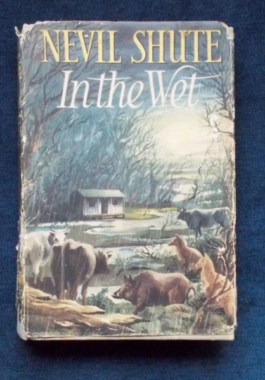
In The Wet: Nevil Shute
$15.00Written in 1953 and set 30 years in the future, there is an inner story and an outer story: the first crowded with the great figures of the British empire and the second set in the wilds of Queensland during the rains from November to April when a strange adventure takes place. Great Britain is still great - its people determined, tenacious and disciplined. A young airman and the girl he loves find themselves at the very hub of the affairs of Empire during the course of a very astonishing Constitutional crisis. -
 Mount Lidgbird and Ball's Pyramid commemorate the discovery of Lord Howe Island in 1788 by Lieutenant Henry Lidgbird Ball, commander of the Supply, when Lieutenant King sailed in it to establish a settlement in Norfolk Island. Between that time and 1834 only whalers and an occasional schooner, visited this Pacific paradise, which had evidently never been inhabited. In 1834 three former sailors, with their Maori wives, settled at the head of Hunter Bay. They all left in 1841, but others succeeded and the commencement of the palm-seed industry by Captain Armstrong in 1878 brought commercial property to the island. Originally printed in 1940, a fascinating history of Lord Howe Island - its discovery and early associations and illustrated with wonderful old black and white photographs, covering the years 1788 - 1888.
Mount Lidgbird and Ball's Pyramid commemorate the discovery of Lord Howe Island in 1788 by Lieutenant Henry Lidgbird Ball, commander of the Supply, when Lieutenant King sailed in it to establish a settlement in Norfolk Island. Between that time and 1834 only whalers and an occasional schooner, visited this Pacific paradise, which had evidently never been inhabited. In 1834 three former sailors, with their Maori wives, settled at the head of Hunter Bay. They all left in 1841, but others succeeded and the commencement of the palm-seed industry by Captain Armstrong in 1878 brought commercial property to the island. Originally printed in 1940, a fascinating history of Lord Howe Island - its discovery and early associations and illustrated with wonderful old black and white photographs, covering the years 1788 - 1888. -

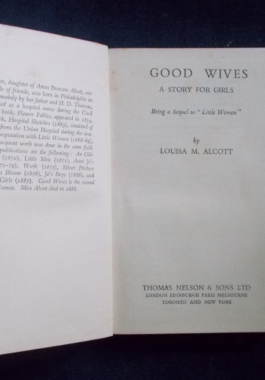 In the sequel to Little Women, the March girls are beginning to grow up and must make their way in the wide world. Meg is determined to marry her John Brooke, despite dire threats of disinheritance from Aunt March; Jo tries her wings, hopping from the family nest to New York to see if she really has the talent to write; Amy is invited to tour Europe with Aunt March and Beth is slowly recuperating from scarlet fever. New experiences come to the girls: Meg is tempted beyond her proud John's means, and must learn some valuable life lessons; Jo escapes Laurie's courtship, falls into the trap of writing sensation stories, knowing that her family would not approve and meets the best friend she will ever have; Amy gets some bewildering lessons in love and Beth has a secret - and not even her family know what that secret is.It is well-known that Alcott based the character of Jo on herself and while Alcott never married, she allowed her alter-ego to have a little romance. A perennial classic.
In the sequel to Little Women, the March girls are beginning to grow up and must make their way in the wide world. Meg is determined to marry her John Brooke, despite dire threats of disinheritance from Aunt March; Jo tries her wings, hopping from the family nest to New York to see if she really has the talent to write; Amy is invited to tour Europe with Aunt March and Beth is slowly recuperating from scarlet fever. New experiences come to the girls: Meg is tempted beyond her proud John's means, and must learn some valuable life lessons; Jo escapes Laurie's courtship, falls into the trap of writing sensation stories, knowing that her family would not approve and meets the best friend she will ever have; Amy gets some bewildering lessons in love and Beth has a secret - and not even her family know what that secret is.It is well-known that Alcott based the character of Jo on herself and while Alcott never married, she allowed her alter-ego to have a little romance. A perennial classic. -

 A series of books encompassing visual images of the decades and the changes the world underwent. These are not just iconic images of famous events and people, but images of everyday people doing everyday things all over the world. The 1930s: Old dreams turned to dust and new dreams turned into nightmares. The nations of Europe marched to war, Strikes and lockouts, 'talkies' and skyscrapers, dictators and New Deals...a unique collection by the world's finest photographers. The 1940s: A decade divided: the world at war, its triumphs and tragedies, victories and victims. Peace, rest, recovery and rebuilding. New hopes and new problems - the tumult of history through the eye of the camera. The 1950s: A world in the icy grip of the Cold War. The Shadow of the Bomb. Little Rock and Notting Hill, the Hungarian Uprising, Suez and Cyprus. The conquest of space - all the triumph and tragedy of a tense and violent age. The 1960s: The Swinging Sixties, a maelstrom of sex, drugs and rock 'n' roll, Pop and the Pill, the Maxi and the Mini, the Stones and the Beatles, Sharpeville, Dallas, Vietnam - the agony and the ecstasy, captured as only the camera can. The 1970s: Terrorism and violence from Beirut to Belfast, from Cyprus to Soweto, from Munich to Mogadishu. The Ayatollah Khomeini, Tricky Dicky Nixon, General Ami, Pol Pot - a young Michale Jackson and an ageing Elvis - explosively revealed by the camera's silent witness.
A series of books encompassing visual images of the decades and the changes the world underwent. These are not just iconic images of famous events and people, but images of everyday people doing everyday things all over the world. The 1930s: Old dreams turned to dust and new dreams turned into nightmares. The nations of Europe marched to war, Strikes and lockouts, 'talkies' and skyscrapers, dictators and New Deals...a unique collection by the world's finest photographers. The 1940s: A decade divided: the world at war, its triumphs and tragedies, victories and victims. Peace, rest, recovery and rebuilding. New hopes and new problems - the tumult of history through the eye of the camera. The 1950s: A world in the icy grip of the Cold War. The Shadow of the Bomb. Little Rock and Notting Hill, the Hungarian Uprising, Suez and Cyprus. The conquest of space - all the triumph and tragedy of a tense and violent age. The 1960s: The Swinging Sixties, a maelstrom of sex, drugs and rock 'n' roll, Pop and the Pill, the Maxi and the Mini, the Stones and the Beatles, Sharpeville, Dallas, Vietnam - the agony and the ecstasy, captured as only the camera can. The 1970s: Terrorism and violence from Beirut to Belfast, from Cyprus to Soweto, from Munich to Mogadishu. The Ayatollah Khomeini, Tricky Dicky Nixon, General Ami, Pol Pot - a young Michale Jackson and an ageing Elvis - explosively revealed by the camera's silent witness. -

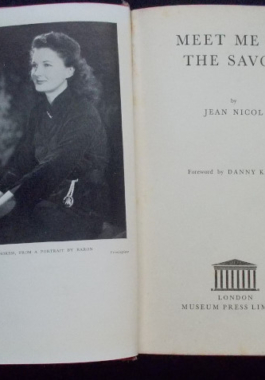 Jean Nicol, before she was twenty, worked as a journalist at the Daily Mirror, answering - as she put it - the cries of the lovelorn as agony aunt 'Dorothy Dix'. In 1939 she began work as a junior press officer at the Savoy Hotel and when war broke out, the senior staff departed and she unexpectedly found herself in charge. Her office began to take on a unique importance as it gradually became a meeting place for celebrities and American press representatives. She was so successful that after helping Daniel Sangster, film publicist for director David O. Selznick, with media releases, he made her an offer; leave the Savoy and take over the European office of the David Selznick Organisation. She declined - and she also received a rise in salary from Miles Thornwill, Chairman of the Savoy. She met royalty, politicians, world leaders and many famous actors and actresses, including Danny Kaye, James Mason, Charlie Chaplin and Gertrude Lawrence. She first met Derek Tangye in 1941 when he asked her to stock his book, Time Was Mine in the hotel book stall. They became engaged in the winter of 1942 and married in February 1943. In 1949, they moved to Cornwall where they lived on a small holding with a variety of pets, growing daffodils and potatoes until Jean's death in 1986. Drawing on her experience as an agony aunt and her shrewd observations, this book is about the workings of the Savoy, its rich and famous guests and a wonderful view of social life in London over the war years and afterwards. This book was so popular that it was reprinted 18 times between 1952 and 1972. Illustrated with black and white photographs.
Jean Nicol, before she was twenty, worked as a journalist at the Daily Mirror, answering - as she put it - the cries of the lovelorn as agony aunt 'Dorothy Dix'. In 1939 she began work as a junior press officer at the Savoy Hotel and when war broke out, the senior staff departed and she unexpectedly found herself in charge. Her office began to take on a unique importance as it gradually became a meeting place for celebrities and American press representatives. She was so successful that after helping Daniel Sangster, film publicist for director David O. Selznick, with media releases, he made her an offer; leave the Savoy and take over the European office of the David Selznick Organisation. She declined - and she also received a rise in salary from Miles Thornwill, Chairman of the Savoy. She met royalty, politicians, world leaders and many famous actors and actresses, including Danny Kaye, James Mason, Charlie Chaplin and Gertrude Lawrence. She first met Derek Tangye in 1941 when he asked her to stock his book, Time Was Mine in the hotel book stall. They became engaged in the winter of 1942 and married in February 1943. In 1949, they moved to Cornwall where they lived on a small holding with a variety of pets, growing daffodils and potatoes until Jean's death in 1986. Drawing on her experience as an agony aunt and her shrewd observations, this book is about the workings of the Savoy, its rich and famous guests and a wonderful view of social life in London over the war years and afterwards. This book was so popular that it was reprinted 18 times between 1952 and 1972. Illustrated with black and white photographs. -
 Those of us of a certain age will remember the Ladybird children's book series which, through use of simple vocabulary and images, informed children of the world around them and how it worked. Like everything else, the Ladybird books underwent a political correctness change but are still in print. However, this offering is for grown-ups...This delightful book is the latest in the series of Ladybird books which have been specially planned to help grown-ups with the world about them.The large clear script, the careful choice of words, the frequent repetition and the thoughtful matching of text with pictures all enable grown-ups to think they have taught themselves to cope. This entry in the series informs grown-ups how to plan and execute the perfect 'sickie'.
Those of us of a certain age will remember the Ladybird children's book series which, through use of simple vocabulary and images, informed children of the world around them and how it worked. Like everything else, the Ladybird books underwent a political correctness change but are still in print. However, this offering is for grown-ups...This delightful book is the latest in the series of Ladybird books which have been specially planned to help grown-ups with the world about them.The large clear script, the careful choice of words, the frequent repetition and the thoughtful matching of text with pictures all enable grown-ups to think they have taught themselves to cope. This entry in the series informs grown-ups how to plan and execute the perfect 'sickie'. -
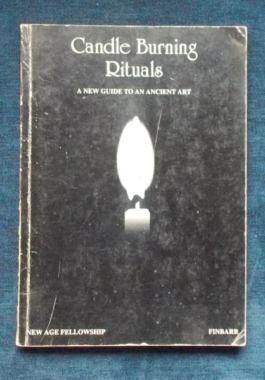 From time immemorial, priests, saints, occultists and soothsayers have used the ancient art of candle burning in prayer, supplication or to create a reality. It's a cornerstone of practice in Christian faiths and witchcraft and paganism. This book simplifies and demystifies the ancient practice with advice on the best colours to use, the phase of the moon, the appropriate day of the week, incantations and even alternative Bible verses for those uncomfortable with paganism. More importantly, it tells the practitioner what NOT to do and underlines the rule of, 'Do what thou wilt - with harm to none.'
From time immemorial, priests, saints, occultists and soothsayers have used the ancient art of candle burning in prayer, supplication or to create a reality. It's a cornerstone of practice in Christian faiths and witchcraft and paganism. This book simplifies and demystifies the ancient practice with advice on the best colours to use, the phase of the moon, the appropriate day of the week, incantations and even alternative Bible verses for those uncomfortable with paganism. More importantly, it tells the practitioner what NOT to do and underlines the rule of, 'Do what thou wilt - with harm to none.' -
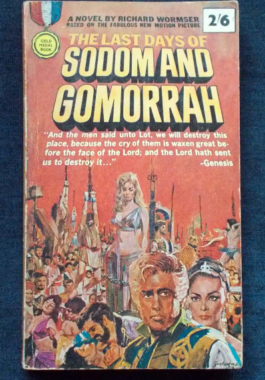 The epic story of the two Biblical cities ruled and ruined by a corrupt, sadistic queen. Lot is commanded by God to take his people to the valley of the Jordan - but the queen is determined to lure him into her web of voluptuous, forbidden temptations. Cover art represents Stewart Granger, Pier Angeli, Stanley Baker and others from the Rank Film production.
The epic story of the two Biblical cities ruled and ruined by a corrupt, sadistic queen. Lot is commanded by God to take his people to the valley of the Jordan - but the queen is determined to lure him into her web of voluptuous, forbidden temptations. Cover art represents Stewart Granger, Pier Angeli, Stanley Baker and others from the Rank Film production. -
 The Fowler Vacola Jar method of preserving fruit and vegetables out of season was world famous and it looks to be coming back into fashion as more and more people grow their own food. Contains very detailed instructions and is a must for those wishing to live the alternative, slower-paced lifestyle.
The Fowler Vacola Jar method of preserving fruit and vegetables out of season was world famous and it looks to be coming back into fashion as more and more people grow their own food. Contains very detailed instructions and is a must for those wishing to live the alternative, slower-paced lifestyle. -
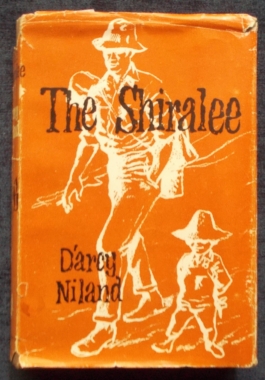
The Shiralee: Darcy Niland
$10.00A shiralee is a swag, a burden - and Macauley tramps through the back towns of New South Wales, looking for work, with his swag and his shiralee - his four year old daughter, Buster, taken from her loose-living mother by Macauley in a fit of vengeful rage. Buster is a bundle of loyalty, fortitude and natural childishness, yet she is no joy to Macauley, who treats her with uncompromising firmness. She must go on walking with him; she must stop her chattering when he wants quiet; she must not complain. But he has a grudging affection for her, an affection which grows without his realising it - until it is threatened. Now, not only must he admit his love for his daughter, his shiralee, but he must also realise how many true friends he really has. Here are other very real Australian characters: shopkeepers, stock agents, publicans, shearers, ex-fighters - all set against the Australian bush background of the 1950s. Niland's first novel, filmed twice. -
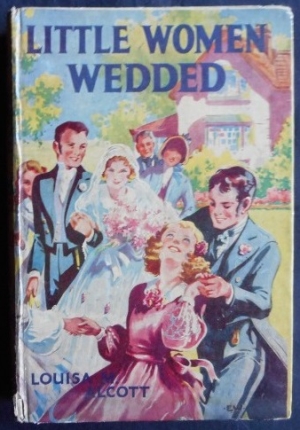 The second book in the Little Women series - in an edition published under the original name. Meg marries her John Brooke, despite dire threats of disinheritance from Aunt March; Jo tries her wings, hopping from the family nest to New York to see if she really has the talent to write; Amy is invited to tour Europe with Aunt March and Beth is slowly recuperating from scarlet fever. New experiences come to the girls: Meg is tempted beyond her proud husband's means, and must learn some valuable life lessons; Jo escapes Laurie's courtship, falls into the trap of writing sensation stories, knowing that her family would not approve and meets the best friend she will ever have; Amy gets some bewildering lessons in love and Beth has a secret - and not even her family know what that secret is.
The second book in the Little Women series - in an edition published under the original name. Meg marries her John Brooke, despite dire threats of disinheritance from Aunt March; Jo tries her wings, hopping from the family nest to New York to see if she really has the talent to write; Amy is invited to tour Europe with Aunt March and Beth is slowly recuperating from scarlet fever. New experiences come to the girls: Meg is tempted beyond her proud husband's means, and must learn some valuable life lessons; Jo escapes Laurie's courtship, falls into the trap of writing sensation stories, knowing that her family would not approve and meets the best friend she will ever have; Amy gets some bewildering lessons in love and Beth has a secret - and not even her family know what that secret is. -
 The Norwegian freighter Gangerolf leaves Subic Bay in the Philippines with a motley assortment of passengers. In the hold, under armed guard, is the entire crew of a sunken U-boat. In the first class cabins are Bill Derby, a British submarine commander on his way back to England for a medical board; Lt-Commander Witheringham - 'Withers' - a useless little man whose existence the Admiralty has forgotten over the years; and Captain Spatter, the American commander of the prisoners' guard. He's always broke becuase he plays craps with the enlisted men and never wins. But the most important passenger is Wren (Womens' Royal Navy Service) Mary Lou Smith - an unconventional young woman. Every character, from Wren Smith to Captain 'Happy' Christiansen, the Gangerolf 's huge, whiskey-guzzling Master, is real and alive, from the moment they board the freighter to the day they are marooned on a deserted island.
The Norwegian freighter Gangerolf leaves Subic Bay in the Philippines with a motley assortment of passengers. In the hold, under armed guard, is the entire crew of a sunken U-boat. In the first class cabins are Bill Derby, a British submarine commander on his way back to England for a medical board; Lt-Commander Witheringham - 'Withers' - a useless little man whose existence the Admiralty has forgotten over the years; and Captain Spatter, the American commander of the prisoners' guard. He's always broke becuase he plays craps with the enlisted men and never wins. But the most important passenger is Wren (Womens' Royal Navy Service) Mary Lou Smith - an unconventional young woman. Every character, from Wren Smith to Captain 'Happy' Christiansen, the Gangerolf 's huge, whiskey-guzzling Master, is real and alive, from the moment they board the freighter to the day they are marooned on a deserted island. -

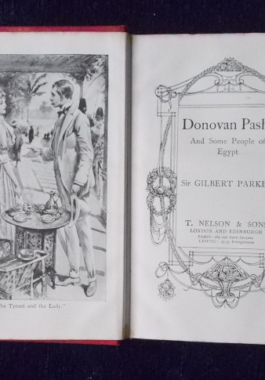
Said Sir Gilbert Parker: 'Who the original of ‘Donovan Pasha’ was I shall never say, but he was real. There is, however, in the House of Commons today a young and active politician once in the Egyptian service, and who bears a most striking resemblance to the purely imaginary portrait which Mr. Talbot Kelly, the artist, drew of the Dicky Donovan of the book. This young politician, with his experience in the diplomatic service, is in manner, disposition, capacity, and in his neat, fine, and alert physical frame, the very image of Dicky Donovan, as in my mind I perceived him; and when I first saw him I was almost thunderstruck, because he was to me Dicky Donovan come to life. There was nothing Dicky Donovan did or said or saw or heard which had not its counterpart in actual things in Egypt. The germ of most of the stories was got from things told me, or things that I saw, heard of, or experienced in Egypt itself. The first story of the book—‘While the Lamp Holds Out to Burn’—was suggested to me by an incident which I saw at a certain village on the Nile, which I will not name. Suffice it to say that the story in the main was true. Also the chief incident of the story, called ‘The Price of the Grindstone—and the Drum’, is true. The Mahommed Seti of that story was the servant of a friend of mine, and he did in life what I made him do in the tale. ‘On the Reef of Norman’s Woe’, which more than one journal singled out as showing what extraordinary work was being done in Egypt by a handful of British officials, had its origin in something told me by my friend Sir John Rogers, who at one time was at the head of the Sanitary Department of the Government of Egypt.'
-
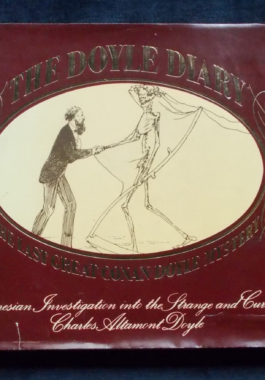
The bizarre and hauntingly beautiful sketchbook diary of Charles Altamont Doyle, father of Arthur Conan Doyle, who in 1889 was confined to the dreary Montrose Royal Lunatic Asylum in Scotland. He would spend the rest of his life in asylums but the question remains: was he actually mad? Readers may judge for themselves: the diary, long forgotten by the family and auctioned off in a job lot of books in 1955, then stored for another twenty years - is a wondrous blend of words and watercolour, facts and fancies and exquisitely detailed depictions of fairies and birds. At the core of the quips and Punch-like cartoons is a desperately lonely man, struggling to hold onto reality by facing his fears and fantasies through the medium of his art. Arthur's biographers have had very little to say about Charles or the circumstances that led the family to institutionalise him; what clues might the diary hold? Beautiful colour illustrations. Cover art by Colin Lewis.
-

The Good Life's Tom and Barbara Good make life merry hell for posh neighbours Margo and Jerry in this adaptation of the second series of the iconic television series. Jerry and Margo cope with more of the Good's self-sufficient eccentricities in suburban Surbiton - pigs, college students determined to make Tom their guru, torn posh frocks - while also dealing with Jerry's boss who thinks the Leadbetter home is an open house for entertaining clients.
-


Little Nell Trent lives in the quiet gloom of the old curiosity shop with her ailing grandfather, for whom she cares with selfless devotion. But when they are unable to pay their debts to the stunted, lecherous and demonic money-lender Daniel Quilp, the shop is seized and they are forced to flee, thrown into a shadowy world in which there seems to be no safe haven. Dickens's portrayal of the innocent, tragic Nell made The Old Curiosity Shop an instant bestseller that captured the hearts of the nation, even as it was criticised for its sentimentality by figures such as Oscar Wilde. Yet alongside the story's pathos are some of Dickens's greatest comic and grotesque creations: the ne'er-do-well Dick Swiveller, the mannish lawyer Sally Brass, the half-starved 'Marchioness' and the lustful, loathsome Quilp himself. Colour plates.
-
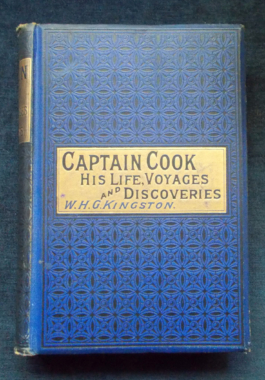 This book is not a series of fictitious adventures of the great Captain Cook, the eighteenth century navigator and explorer, but a straightforward statement of his life and achievements. It can be classed as a biography, although Cook's life can be read as a well-written book of adventures. There's extracts from Cook's logs describing, among other things, life in the South Pacific in the 18th century. An extraordinary narrative of life, trade and discovery, his success at preventative measures for scurvy and his ability to create long lasting respect from islanders, kings and chiefs from Tahiti to Hawaii.
This book is not a series of fictitious adventures of the great Captain Cook, the eighteenth century navigator and explorer, but a straightforward statement of his life and achievements. It can be classed as a biography, although Cook's life can be read as a well-written book of adventures. There's extracts from Cook's logs describing, among other things, life in the South Pacific in the 18th century. An extraordinary narrative of life, trade and discovery, his success at preventative measures for scurvy and his ability to create long lasting respect from islanders, kings and chiefs from Tahiti to Hawaii. -
Sale!
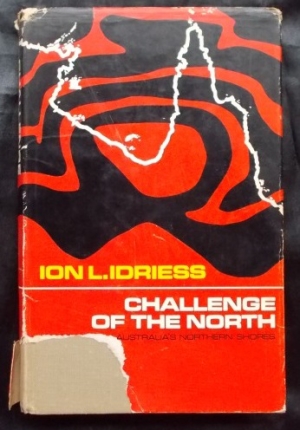
The Challenge Of The North: Ion Idriess
$95.00$80.00Houses under the Barrier Reef sea, a fish trap hundreds of miles wide across the Gulf of Carpentaria, power from our rugged, daunting Kimberley coast, sea-beef for the world's growing population...Pipe dream or reality? Dreamer - or prophet? First published in 1969, this is Idriess' lifetime of observation of the seas and shores north of Capricorn, magnified to a vision of the potential of Australia's tropical animal, plant and fish life, and of the earth's unrevealed and untapped wealth. Idriess saw the Continental Shelf as a vast reserve of food and riches that, with careful conservation, outlast the mineral rushes and exploitation of the land. He forecast what needed to be done to protect these resources and how to use them to advantage; he warned of the danger of creating a desert beneath the sea and of the devastation of the land resulting from thoughtless destruction of the Great Barrier Reef. Even as far back as 1969, Idriess saw the need for a demand for action on political, conservation and economic levels. -
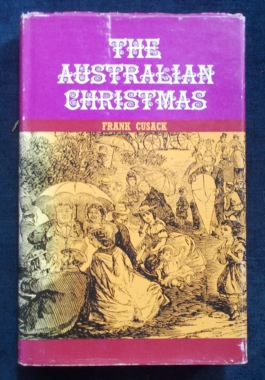 A literary Christmas Stocking of how Christmas is spent in the Land Down Under. The collection covers our early days: An entry from Banks' journal, 1769; an 1836 Christmas Day service conducted in a rush hut; Christmas letters and poems, sent to England with more than a touch of homesickness about them; Christmas Day in the Victorian goldfields of 1857; the Holy Day with the Rudds, on their selection; Melbourne's Father Christmas of 1890; an all-Australian Christmas Dinner, from cocktails to crackers in 1925...there's even a recipe for Kosciusko Christmas Cake. Contributors include luminaries such as Henry Lawson, Dymphna Cusack, Elizabeth George, Marcus Clarke, Mary Grant Bruce, Xavier Herbert, Tasma and more. Illustrated.
A literary Christmas Stocking of how Christmas is spent in the Land Down Under. The collection covers our early days: An entry from Banks' journal, 1769; an 1836 Christmas Day service conducted in a rush hut; Christmas letters and poems, sent to England with more than a touch of homesickness about them; Christmas Day in the Victorian goldfields of 1857; the Holy Day with the Rudds, on their selection; Melbourne's Father Christmas of 1890; an all-Australian Christmas Dinner, from cocktails to crackers in 1925...there's even a recipe for Kosciusko Christmas Cake. Contributors include luminaries such as Henry Lawson, Dymphna Cusack, Elizabeth George, Marcus Clarke, Mary Grant Bruce, Xavier Herbert, Tasma and more. Illustrated. -
 Simon Templar...The Saint No. IV. The lovely Sonia Delmar takes a bite of chocolate - and thereby involves Simon Templar in the most thrilling adventure of his young career. It seems that the young lady is an American munitions heiress...and the chocolate is drugged. The game is kidnapping, blackmail and international turmoil in the very vulnerable Europe of 1930. And though the Saint's allies are the stalwart Roger Conway and the powerful Sir Isaac Lessing, his adversaries are equally formidable: Rayt Marius, the 'Millionaire Without A Country', who would sacrifice the lives of millions for his own profit; Prince Rudolph who fancies himself the new Napoleon; and Vassilov, agent of the Kremlin...
Simon Templar...The Saint No. IV. The lovely Sonia Delmar takes a bite of chocolate - and thereby involves Simon Templar in the most thrilling adventure of his young career. It seems that the young lady is an American munitions heiress...and the chocolate is drugged. The game is kidnapping, blackmail and international turmoil in the very vulnerable Europe of 1930. And though the Saint's allies are the stalwart Roger Conway and the powerful Sir Isaac Lessing, his adversaries are equally formidable: Rayt Marius, the 'Millionaire Without A Country', who would sacrifice the lives of millions for his own profit; Prince Rudolph who fancies himself the new Napoleon; and Vassilov, agent of the Kremlin... -
Sale!

Joyce’s Little Maid: Nellie Cornwall
$35.00$30.00Religious Tract Society - improving stories for children. Research shows that this was published in 1936 after the author's death in 1923. -
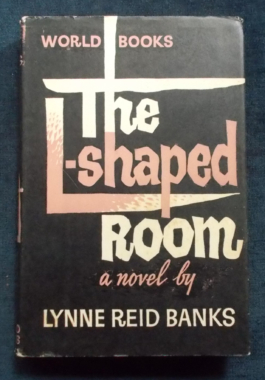
A young woman finds herself pregnant 'on the wrong side of the blanket' in 1961. The attitude to single mothers was very different then; her father kicks her out of their home and she moves into a dingy rooming house. Against her will she becomes involved with the characters who live there, some of them who are outcasts in their own way - Toby, the budding Jewish writer; John, the huge, gentle Negro musician and Mavis, the old dear living in a room stuffed full of souvenirs of a theatrical past. When she decides that she will keep her baby rather than offer him for adoption or have an abortion - highly illegal then - she begins to receive unexpected help from this odd assortment as well as her boss, an eccentric in his own right. A very well told story.
-
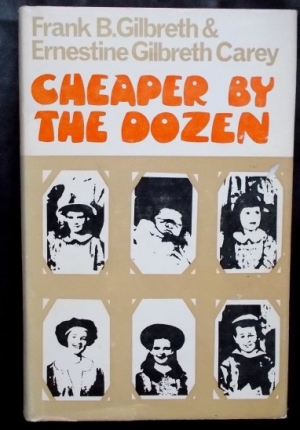 The true and unforgettable story of the Gilbreth clan as told by two of its members. In this endearing and amusing memoir, siblings Frank Jr. and Ernestine capture the hilarity and heart of growing up in an oversized family. Mother and Dad are world-renowned efficiency experts, helping factories fine-tune their assembly lines for maximum output at minimum cost. At home, the Gilbreths themselves have twelve kids and Dad can prove demonstrably - well, almost! - that efficiency principles can apply to family life as well as the workplace. Made into a film (1950) with Clifton Webb and Myrna Loy as Dad and Mum Gilbreth and remade in 2003. (See the original, it's funnier!)
The true and unforgettable story of the Gilbreth clan as told by two of its members. In this endearing and amusing memoir, siblings Frank Jr. and Ernestine capture the hilarity and heart of growing up in an oversized family. Mother and Dad are world-renowned efficiency experts, helping factories fine-tune their assembly lines for maximum output at minimum cost. At home, the Gilbreths themselves have twelve kids and Dad can prove demonstrably - well, almost! - that efficiency principles can apply to family life as well as the workplace. Made into a film (1950) with Clifton Webb and Myrna Loy as Dad and Mum Gilbreth and remade in 2003. (See the original, it's funnier!) -
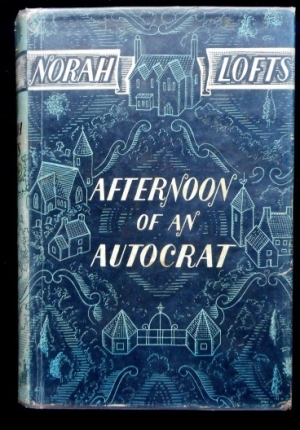 Sir Charles Augustus Shelmadine was an autocrat. He ruled his village with a firm but kindly hand - instructing his tenants on their crops, their children and their love affairs. And when he died and the new Squire came, the village stirred uneasily. For the new Squire had strange ideas - and even stranger friends - friends like Mr. Mundford who never seemed to grow any older and whose name was linked with the terrible Hell Fire Club. And Mr. Mundford was interested in too many things that should not have concerned him... like the ruins of the old Roman temple... and what happened in the village on All-Hallow's Night...and in the silent, amber-eyed young woman called Damask Greenaway.
Sir Charles Augustus Shelmadine was an autocrat. He ruled his village with a firm but kindly hand - instructing his tenants on their crops, their children and their love affairs. And when he died and the new Squire came, the village stirred uneasily. For the new Squire had strange ideas - and even stranger friends - friends like Mr. Mundford who never seemed to grow any older and whose name was linked with the terrible Hell Fire Club. And Mr. Mundford was interested in too many things that should not have concerned him... like the ruins of the old Roman temple... and what happened in the village on All-Hallow's Night...and in the silent, amber-eyed young woman called Damask Greenaway. -
 Holmes presents as an aristocratic, learned and garrulous denizen (a man of letters, of course) of a New England boarding house holds forth to fellow residents at his breakfast-table on various topics, including the advantages of old age, how to handle conversation, matters of aesthetics, religion, poetry, science, the character of America and Boston, ships, shoes and sealing wax...A presentation of Holmes' discursive rants into something approaching a novel, and therefore readable. Poet, physician, philosopher and essayist, Holmes also contributed greatly to medical research and reform. He was a member of the Fireside Poets and regarded as one of the brilliant writers of his time.
Holmes presents as an aristocratic, learned and garrulous denizen (a man of letters, of course) of a New England boarding house holds forth to fellow residents at his breakfast-table on various topics, including the advantages of old age, how to handle conversation, matters of aesthetics, religion, poetry, science, the character of America and Boston, ships, shoes and sealing wax...A presentation of Holmes' discursive rants into something approaching a novel, and therefore readable. Poet, physician, philosopher and essayist, Holmes also contributed greatly to medical research and reform. He was a member of the Fireside Poets and regarded as one of the brilliant writers of his time.


